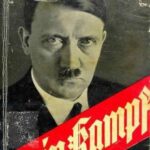Dissent and disagreement between competing factions is unavoidable; it is as if no two persons can selflessly and unreservedly agree on any one principle. And this problem is not unique to modern times: it is one as old as the human race. And in the realm of politics, especially, men and women have fought, schemed, and undermined one another to no end in search of strategic superiority. Juan and Eva Perón, two Argentineans whose notorious political lives thrust them squarely into the international spotlight, were both loved and hated by different groups for their brand of political thought and have left behind a nationwide political movement, Peronism, which has been revered by some and classified as disruptive to Argentine politics, economy and society by others.
By championing the cause of state-directed economic policy, Juan and Eva Perón developed favorable political relationships and gained support from numerous groups. Through nationalist policies, encouraging strikes, increased union membership, and the increase of hourly wages, Perón gained enormous support from urban workers, who were undoubtedly his most political ally (Skidmore, p. 86). The workers felt so strongly in favor of Perón that a demonstration on 17 October 1945 freed him from confinement and set about a course which would lead him to be elected president the following year (Skidmore, p. 275). The military, too, was a strong supporter of Perón as he was a member of the military overthrow in 1943 and used his military career as a springboard to political power (Skidmore, p. 3). And in 1948, Eva began dispersing capital personally, laying a solid foundation of loyal supporters (Skidmore, p. 87). And she would use her followers in her quest to become Argentina’s vice president, an ambition which would have been unthinkable for any woman without monumental influence and popularity (Skidmore, p. 87-88).
Though Juan and Eva had plenty of supporters to back their political ambitions, they also had their share of political opponents. The Union Civica Radical (UCR) proved to be the main opponent of Perón after their defeat in the 1946 election; their defeat to Perón in the election led to an internal power struggle which would ultimately lead to the appointment of many young candidates to oppose the charisma of Perón (Skidmore, p. 4). Another group, the Radicals, used representatives in the National Congress to diminish some of Perón’s popularity with urban workers by denying that Peronism was the only political thought which sought to improve welfare of Argentinean sectors of industry and social and economic development (Skidmore, p. 4). Eva found opposition from the society matrons, the “senoras gordas,” a group who had previously had control over the political lives of Argentine first ladies (Skidmore, p. 87). And as her popularity grew, Eva undertook a campaign to become vice president alongside her husband, but the move was ultimately opposed and vetoed by the timid, almost misogynistic military elite; the same group which had once been a firm supporter of Juan and Eva (Skidmore, p. 87-88).
The group whose plight was most improved by the rise of Peronism was the urban workers. A group who had only been capable of minimal progress in work conditions and social legislation in the three years leading into the Perón administration were now the crowning jewel of Perón’s empire, and workers under Perón began to experience an increase in the organizational strength and social weight of the working class; the influence and sway of the masses was growing (Skidmore, p. 275). And that growth came primarily through the creation and increased participation in workers’ unions. In 1948, the rate of unionization had grown to an astonishing 30.5 percent and would climb to 42.5 percent in the mid-1950s (Skidmore, p. 275-276). Between 1946 and 1951, the number of Argentine workers participating in unions increased by 1,814,000 members, an almost unbelievable amount in only a 5-year span (Skidmore, p. 276). And, Perón’s policies led to the unionization of thousands of textile and metal workers, where unionization had previously not been an option (Skidmore, p. 276). And as a result of these policies, real hourly wages increased 25 percent in 1947 alone and another 24 percent in 1948; the labor sector gained a total of 25 percent of the national income from 1946 to 1950 (Skidmore, p. 86).
However, not everyone benefited from Peronism. Those who owned capital during the Perón administration, for example, found themselves losing money under Perón. Landowners were hit especially hard as the government trade monopoly would only buy their goods at low, fixed prices which were set by the state, creating a dramatic decrease in funds (Skidmore, p. 86). The middle and upper classes, displeased with the rising prosperity of the working class, opposed Perón’s administration and were a threat to destroy the progress of his administration (Skidmore, p. 88). And the military, before their denial of Eva’s run for vice presidency, caused problems for Perón when a number of military officers attempted a coup against Perón; it was unsuccessful, but it set the tone for later uprisings and discontent within the Perón administration (Skidmore, p. 88).
There were also those who believed all along that Peronism was harmful to the Argentine politics, economy and society. The UCR, for example, had fought Perón since the election of 1946. Unlike the Radicals, who had occasionally agreed with some aspects of Peronism, the UCR had fought Peronism in Congress and in the election of 1946 and was so anti-Peronism that it deliberately took measures to assure the Argentine electorate that it was indeed the main opposition force to Peronism (Skidmore, p. 6). And the socialists, who had accused Perón’s government of being totalitarian and restrictive of freedom, were described as the most fierce opponents of Peronism since Perón took office (Skidmore, p. 9) On the religious front, Perón began to agitate the Catholic church as he legalized divorce in 1954 and placed all parochial schools under the state’s control. Peronists orchestrated nationwide rallies against the church, burning several cathedrals in Buenos Aires; these actions led to the excommunication of Perón’s government (Skidmore, p. 89). And finally, in 1955, the aforementioned military opponents of Perón promised him a civil war if he did not resign; Perón agreed (Skidmore, p. 89). The factions who had opposed Perón and Eva throughout the Perón administration had relentlessly taken an insurmountable toll on Perón’s presidency.
Juan and Eva Perón, two Argentineans whose notorious political lives thrust them squarely into the international spotlight, were both loved and hated by different groups for their brand of political thought and have left behind a nationwide political movement, Peronism, which has been classified by some as disruptive to Argentine politics, economy and society. Juan and Eva found great support in the urban workers they helped but found disdain from the landowners who lost money through Perón’s fixed-rate governmental purchases. Eva’s vice presidential hopes were slashed by the military’s gender prejudice, and dissent from groups like the UCR and the socialists and the military eventually led to Perón’s downfall. But, though Perón was exiled in 1955, the legacy of Peronism is one (though ambiguous) dominates the political landscape of modern Argentina. Juan and Eva’s physical bodies no longer exist, but their political legacy lives on.
Works Cited
Skidmore, Thomas E. Modern Latin America. Oxford: New York, 2001.


